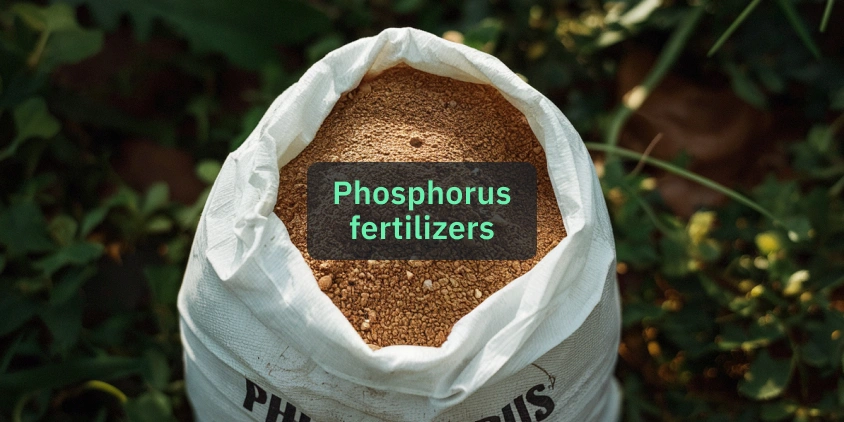
Phosphorus Fertilizers: Types And Role In Agriculture
In the quest for sustainable agriculture, phosphorus fertilizers stand at the forefront of both challenge and opportunity. This vital nutrient, indispensable for plant development, requires careful management to maximize its benefits while minimizing its environmental impact. To help farmers, food producers, and input suppliers achieve better crop yields and healthier soil, we’ve compiled this detailed guide to phosphorus fertilization. We’ll explore the advantages and disadvantages of various phosphorus-based fertilizers, examine the best ways to apply them, and introduce innovative tools that skyrocket fertilization efficiency in agricultural fields across the globe.
What Is Phosphorus Fertilizer?
Phosphorus fertilizer is a nutrient-rich product that plays a crucial role in modern agriculture, supplying one of the three macronutrients essential for plant growth. As rain constantly washes phosphorus (P) from the soil, farmers rely on organic or synthetic fertilizers to replenish depleted reserves.
Phosphorus drives key plant processes like energy and nutrient transport, photosynthesis, and cell division. Thus, when applied correctly, phosphorus-rich fertilizers boost the availability of this vital nutrient for crops, enhancing their growth and productivity. The most prominent benefits of using phosphorus fertilizers are:
- robust root growth;
- strengthened stalks and stems;
- improved flowering and seed production;
- enhanced disease resistance and stress tolerance;
- improved legume nitrogen-fixing capability;
- more even and faster crop maturity;
- higher crop quality.
However, overuse can lead to runoff, potentially causing environmental issues. Balancing the agricultural application of phosphorus fertilizer is essential to maximizing crop yields while minimizing ecological impact.
Phosphorus Deficiency In Plants
Identifying phosphorus deficiency is tricky, as plants often show no obvious symptoms beyond early growth stunting. So, by the time nutrient deficiency is apparent in annual crops, it may be too late to fix it. Some plants, though, show an abnormal purplish discoloration of leaves and stems, which helps farmers timely intervene with phosphorus-containing fertilizer applications.
Phosphorus moves easily within plants, shifting to young growth areas and later to fruiting parts. It’s critical for seed and fruit formation, with late-season deficiencies significantly affecting crop maturity. Later in the growing season, plants need more phosphorus than other nutrients.
Soil moisture greatly influences P availability. Before fertilizing, check soil moisture levels across fields. Crop monitoring systems such as EOSDA Crop Monitoring allow for large-scale moisture assessment without the need for ground sensors. Use this data alongside precipitation information on our platform to optimize phosphorus fertilizer application. Timely detection and management of phosphorus deficiencies are key to ensuring healthy crop development and maximizing harvest potential.

EOSDA Crop Monitoring
Performing fields analytics based on relevant satellite data to ensure effective decision-making!
Types Of Phosphorus Fertilizers
Effective phosphorus management requires a strategic approach to fertilizer selection. Seasoned crop producers carefully evaluate their unique farming context, considering soil characteristics, crop requirements, and environmental variables. Understanding various phosphorus-containing fertilizer options, including their strengths and potential drawbacks, enables farmers to implement tailored nutrient management plans that optimize crop yields.
Organic Phosphorus Fertilizers
Organic phosphorus, primarily sourced from animal husbandry and urban environments, provides more than just nutrients. These natural phosphorus fertilizers play a crucial role in fostering soil vitality and supporting sustainable agricultural practices.
Bone Meal
Bone meal is prized for its slow-release phosphorus, which is particularly beneficial for perennials and root vegetables. However, it presents several challenges: variable nutrient percentage, higher costs compared to synthetic phosphate fertilizers, and potential calcium overload in soils. Availability issues and slow decomposition rates in certain soil and environmental conditions can further complicate its use. Despite these drawbacks, bone meal remains a valuable input in organic farming. Its benefits in phosphorus-deficient soils and suitability for long-term crops make it a popular choice for those prioritizing sustainable agricultural methods.
Fish Meal
Fish meal, a gradually released fertilizer with phosphorus, also offers a rich source of organic matter, promoting soil fertility and supporting the growth of leafy greens and fruit-bearing crops. However, fish meal poses several challenges: sustainability concerns related to its production, a rank odor during application, limited availability in some growing zones, and the threat of soil contamination with heavy metals. These factors necessitate careful consideration when using fish meal as a source of phosphorus. Despite these issues, it remains a valuable organic fertilizing option for enhancing soil health and plant nutrition when used responsibly and with awareness of its limitations.
Compost
Compost provides sustained nutrient release, benefiting plants while recycling organic matter. It improves soil microbiome health, stabilizes pH, and enhances water retention. Unlike concentrated granular phosphorus fertilizers, compost rarely causes overfertilization. These qualities are particularly valuable in water-scarce regions.
However, compost’s variable nutrient content can complicate precise fertilization. The slow-release nature, while generally advantageous, may not suit crops requiring rapid nutrient uptake during critical growth stages. Nevertheless, compost remains an essential component in sustainable farming practices, offering multiple soil health benefits beyond mere nutrient provision.
Rock Phosphate
Rock phosphate serves as an organic source of phosphorus and trace elements, slowly releasing nutrients over time. It is effective for long-term soil enrichment, especially in phosphorus-deficient regions like South Asia and Sub-Saharan Africa. However, rock phosphate fertilizer won’t provide a rapid nutrient response for crops since its effectiveness relies on soil microbial activity to convert insoluble phosphorus into plant-available forms.
Farmers might require larger quantities of rock phosphate applied due to its lower P content compared to synthetic fertilizers. This mineral is unsuitable for acidic soils, so you’ll need to conduct pH testing before application. It’s also important to consider environmental concerns associated with mineral mining, which highlight the need for sustainable practices in its production and use.
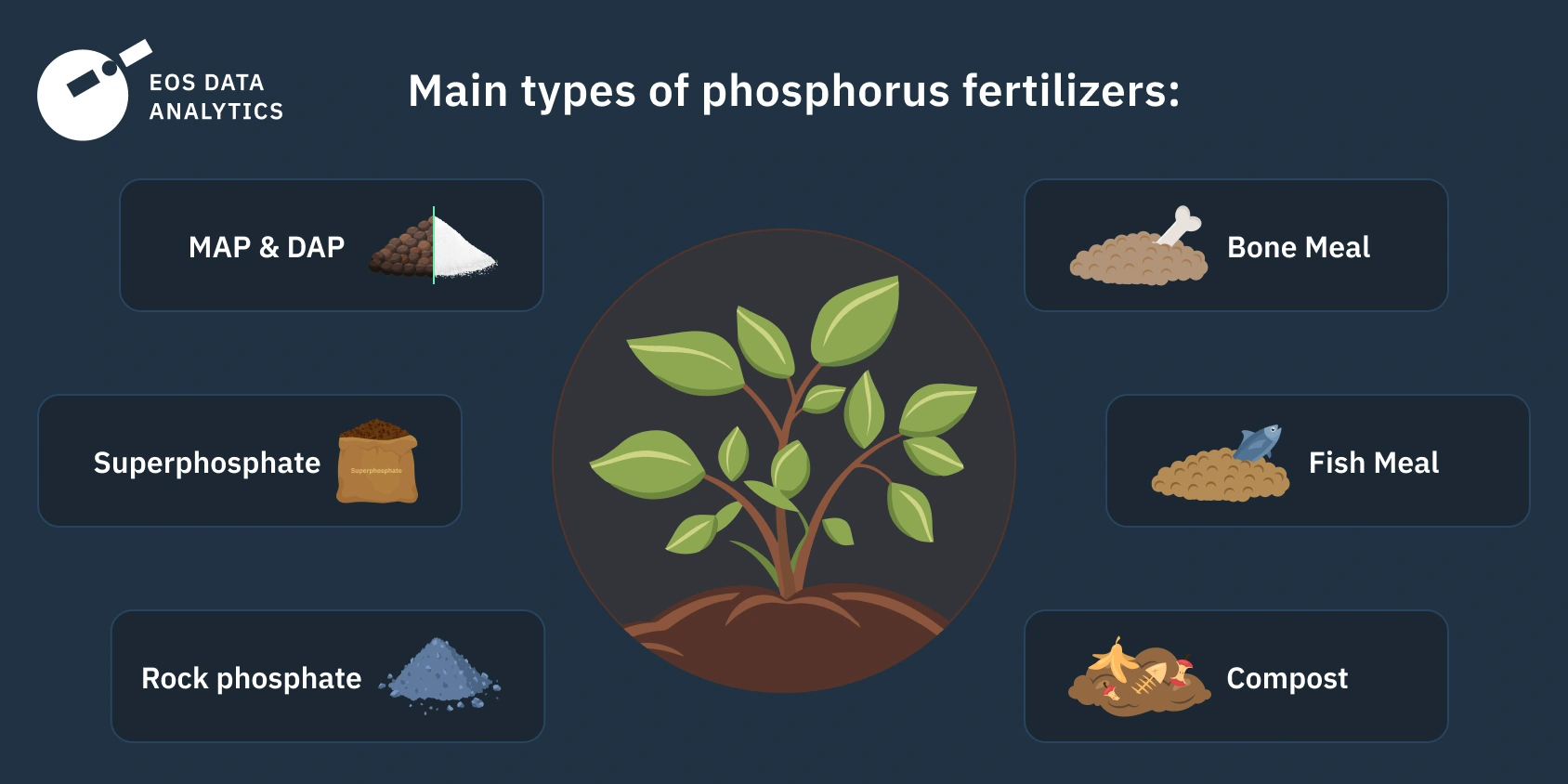
Synthetic Phosphorus Fertilizers
The agricultural sector has shifted away from raw rock phosphate, despite it being the natural source material for synthetic phosphorus fertilizers. This transition is dictated primarily by rock phosphate’s low phosphorous content and limited cropresponse .Instead, farmers increasingly favor well-refined inorganic phosphate fertilizers, which provide more consistent and substantial crop yields.
Single Superphosphate (SSP)
Single superphosphate, the first commercial fertilizer for treating phosphorus deficiency, marked the beginning of modern agricultural phosphorus-rich inputs. While it contains a relatively low percentage of phosphorus, SSP paved the way for more concentrated formulations. Today, the agricultural landscape has shifted, with triple superphosphate now dominating the market due to its higher P concentration.
Double Superphoshpate (DSP)
Double superphosphate is a moderate-strength phosphorus fertilizer, delivering twice the phosphorous punch of a single superphosphate while maintaining similar traits in appearance and function. DSP production resembles that of triple superphosphate, with the key difference being the concentration of phosphoric acid used on phosphate rock. Double superphosphate offers farmers a middle ground between single and triple superphosphate options.
Triple Superphosphate (TSP)
Triple superphosphate emerged as a pioneering high-analysis P fertilizing product in the 20thcentury . With more than three times the phosphorous content of a single superphosphate, TSP is a concentrated source of this essential nutrient. Unlike its single counterpart, TSP contains only phosphorous, excluding sulfur, which can add to soil acidification.
Triple superphosphate is versatile enough for use in soils ranging from slightly acidic to alkaline. As an example of a slow-release phosphorus fertilizer, TSP is typically applied during autumn fertilization for long-term nutrient provision throughout the growing season.
Monoammonium Phosphate (MAP)
For years, farmers have relied on monoammonium phosphate, a nutrient-rich phosphorus fertilizer, to boost crop yields. These fast-acting, water-soluble phosphorus fertilizer granules rapidly dissolve in damp soil, separating into ammonium and phosphate — key components for healthy plant development. While MAP’s dual-nutrient nature makes it an efficient fertilizer, it comes with challenges. Farmers should be aware of potential soil salinity and fertilizer volatilization issues, particularly in alkaline soil conditions.
Diammonium Phosphate (DAP)
Diammonium phosphate reigns supreme as the most commonly used phosphorus fertilizer. Its superior physical qualities and high nutrient content are the main reasons for its popularity . Many fruits, vegetables, and grains benefit from DAP because of the powerful combination of phosphorus and nitrogen it supplies.
However, while DAP boasts higher solubility than monoammonium phosphate, it can elevate soil pH locally. This characteristic requires careful management, particularly in alkaline soils, to prevent potential issues with plant germination and nutrient availability. Additionally, surface-applied diammonium phosphate fertilizer carries a higher risk of nitrogen loss compared to its monoammonium counterpart.
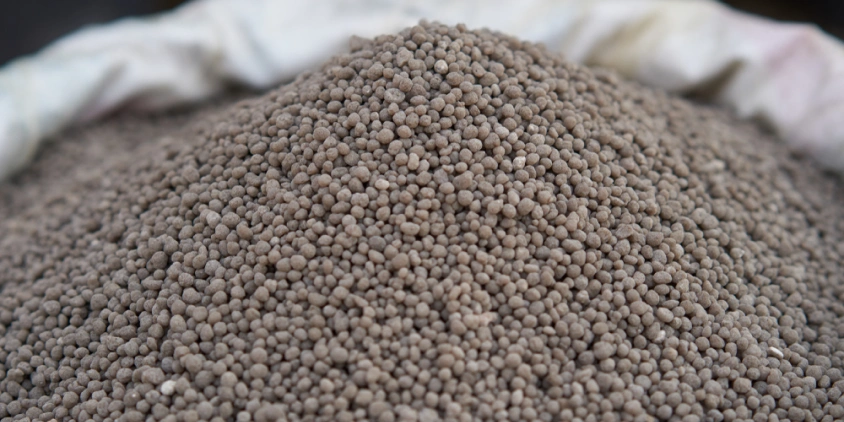
Types By Speed Of Action
Phosphorus fertilizers differ in how quickly they act. Consequently, we can classify them into several categories:
- Fast-acting. These are water-soluble products, encompassing superphosphates and ammonium phosphates. Use fast-release phosphorus fertilizers to quickly fix a nutrient deficiency, especially if you’re growing heavy feeders.
- Slow-acting. These are citric-acid-soluble products, such as basic slag, a low-phosphate fertilizer with a liming effect. Apply them to provide a steady, longer-term nutrient supply while increasing soil pH, or amend the soil before planting perennials.
- Very slow-acting. These are the compounds, such as phosphate and bone meal, that are barely soluble in citric acid. Use them to improve soil nutrient levels over an extended period, especially as part of a long-term soil improvement strategy in organic farming systems.
Critical Aspects Of Applying Phosphorus Fertilizers For Plants
Phosphorus fertilizers are prone to runoff, which is a significant environmental concern. To mitigate this, proper application methods, timing, and amounts are crucial.
When To Apply Phosphorus Fertilizers
Optimizing phosphate fertilizer application requires careful timing to minimize runoff risks. Avoid applying P when heavy precipitation is forecasted within 48 hours or on frosted, snow-covered, or water-soaked soil. These conditions significantly increase the likelihood of P loss via runoff.
To support precise fertilizer management, EOSDA Crop Monitoring offers detailed weather forecasts for up to 14 days. This tool provides hourly predictions for key weather parameters like temperature, precipitation, humidity, wind speed, and evapotranspiration. By integrating weather data into field activity planning, crop producers using our precision agriculture platform can identify ideal windows to use phosphorus fertilizer. This holistic approach enables data-driven decisions that balance agronomic needs with environmental stewardship.

How To Apply Phosphorus Fertilizers
Apply phosphorus-based fertilizers either below the soil’s surface or work them into the soil whenever possible. Applying inorganic phosphate fertilizers in bands, such as 2 inches (5 cm) above and 2 inches (5 cm) below the seed, allows for more fertilizer-to-seed contact and greater plant availability with lower rates than broadcast applications. In pasture or zero-till systems, where broadcast applications are usually the only solution, they should be scheduled according to our previous anti-runoff advice.
For liquids and slurries, it’s also best to inject or apply them subsurface. This is facilitated by a variety of tools, even in pasture or zero-till settings. When applying liquid phosphorus fertilizers through fertigation systems, ensure sufficient infiltration so that there is no accumulation or runoff.
To optimize the P application, leverage historical field productivity data. EOSDA Crop Monitoring analyzes satellite imagery from previous growing seasons and identifies zones of high and low vegetation to generate variable-rate application (VRA) maps. These maps can be exported and uploaded to agricultural machinery for precise, variable-rate fertilization, ensuring efficient phosphorus and potassium use across the field.
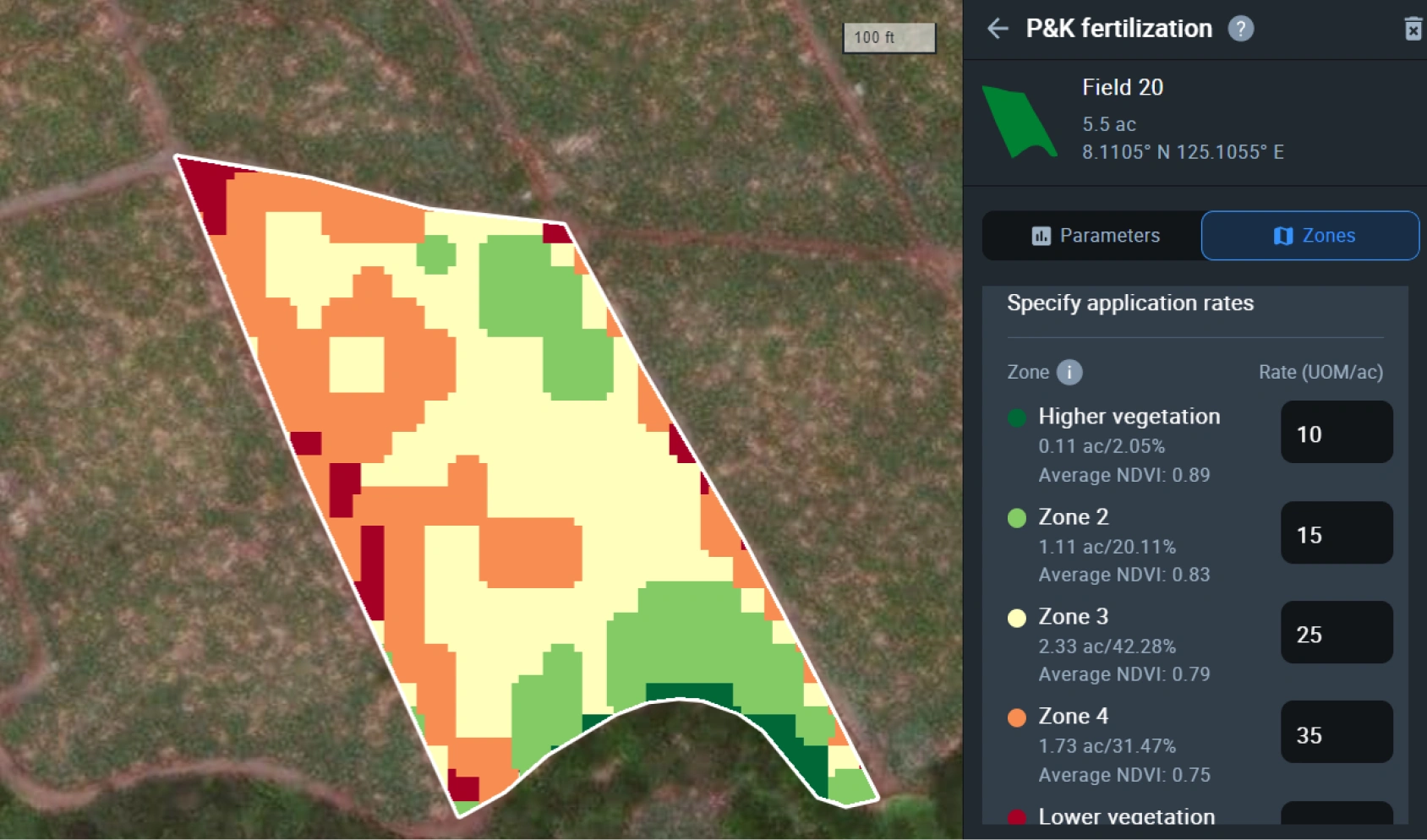
As our understanding of soil properties and plant nutrition evolves, so must our fertilization practices. The shift toward more precise, targeted phosphorus applications represents a significant step forward in agricultural efficiency. By combining traditional knowledge with modern tools like satellite imagery analysis and variable-rate application maps, farmers can fine-tune their phosphorus fertilizer strategies, paving the way for a more sustainable and productive future in farming.
About the author:
Vasyl Cherlinka is a Doctor of Biosciences specializing in pedology (soil science), with 30 years of experience in the field. He attended the engineering college in Ukraine and received his degree in agrochemistry, agronomy and soil science in the Chernivtsi National University. Since 2018, Dr. Cherlinka has been advising EOSDA on problems in soil science, agronomy, and agrochemistry.
Recent articles

Transition Guide From Sentinel Hub EO Browser To EOSDA LandViewer
Need an EO Browser alternative that’s just as familiar but more flexible? EOSDA LandViewer offers free recent imagery, a vast satellite data archive, and advanced analytical tools.
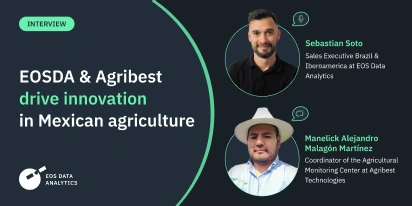
EOSDA & Agribest: Driving Agtech Growth In Mexico
In this insightful interview, Agribest shares how its collaboration with EOSDA is shaping Mexico’s agricultural future, with a focus on profitability, sustainability, and technology.

Top Ready-Made Agriculture Tools & Softwares for 2025
Agriculture softwares are silent partners in the field, working tirelessly behind the scenes to support farmers with insights and precision to cultivate sustainable agricultural ecosystems.